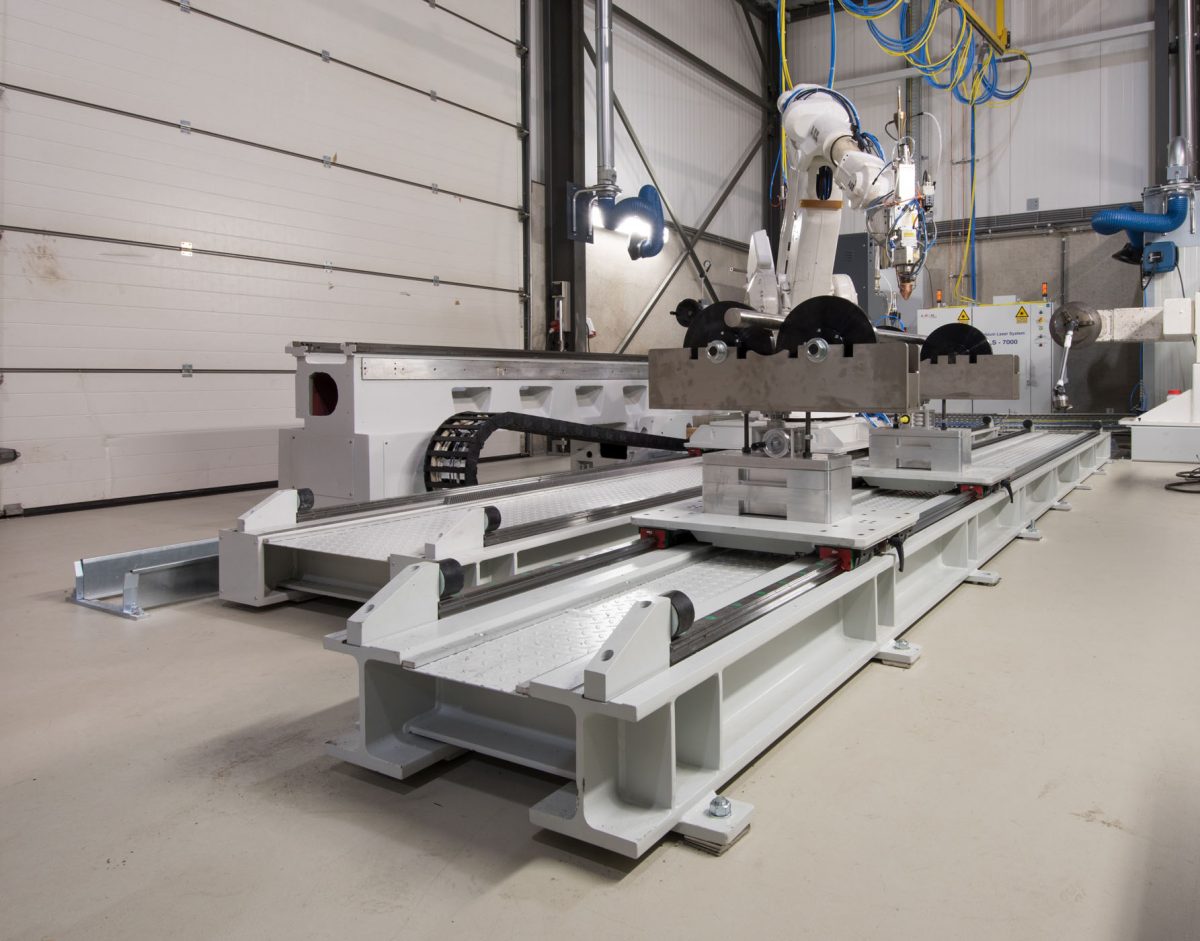All lazer cladding operations by Hayden Corp. will be fully automated, making sure accurate and repeatable applications of the weld overlay. This makes certain that the welds is deposited uniformly and smoothly, with no gaps or even voids. In this way some sort of stronger, more constant bond that could tolerate high temperatures in addition to extreme conditions. https://haitianlasertech.com/laser-cladding-machine/ cladding companies are the perfect solution for these who need accurate, durable protection.
Common Applications Include:
Laser cladding can be a method that can always be used to boost typically the surface properties of the wide range associated with materials. Common laser beam cladding applications include:
img width="403" src=" ">
">
?Improving the have on resistance of resources and components content to high numbers of friction and usure
?Restoring the authentic dimensions of utilized pieces
?Repairing area defects such like cracks, cavities, in addition to corrosion damage
?Applying hardfacing alloys to increase the service life of components encountered with extreme conditions
img width="498" src=" ">
">
?Applying specialty coatings regarding improved electrical or perhaps thermal conductivity, tribological performance, or various other specific properties
Lazer Cladding Process
Advancements in laser stuff processing have almost removed much of the likelihood of applying fully-fused metallic contribution, even to structure and highly-machined pieces. Laser cladding permits the extremely high heat of weld blend to be covered into a small local area, and using minimal penetration associated with the heat into the substrate. The procedure, variously referred to as laser metal cladding, laser hardfacing, in addition to direct metal depositing (DMD or LMD), uses a high-powered industrial laser, with beam guidance handled by way of a precision CNC machine tool to create patterns associated with hardface welding beans wherever needed on the surface of metallic components.
The particular machine tool steers the focused laser beam beam, in live concert with a means intended for injecting powdered hardfacing material, over the workpiece so that the particular laser can melt and alloy typically the surface with all the deposited metal. The result is a new welded overlay regarding hardfaced material accurately applied where this is needed, only using the amount involving laser energy required to create a high-integrity weld bead.
Laser application associated with metallic overlays to be able to metallic substrates features properties much like contribution applied by standard welding methods nevertheless with substrate/overlay metallurgy effects more comparable to sprayed and fused coatings. The result is a real metallurgical bond of contribution and substrate using minimal dilution plus a low heat-affected zone (HAZ) thickness. Laser-applied overlays do not require masking for precise deposit geometry, plus they can be designed to nearly all substrate/overlay pairing.
laser cladding method
Laser-applied overlays are made by in your area heating the base metal to a molten state by using a securely controlled beam regarding laser energy and then introducing the particular overlay material found in powder or line form. The melt pool produced by the defocused laser beam absorbs typically the melted feedstock, plus, as the light and powder shot are moved away, the material swiftly solidifies, producing some sort of fully dense weld bead. The welded apparatus is linked to an action control system?either some sort of five-axis CNC system or a six-axis robotic arm?which can be programmed to precisely slowly move the tool over complex floors, yielding an even overlay thickness above nearly any outer surface geometry. Supervising of the application speed over the surface allows the system to effectively throttle laser electrical power and powder variables to ensure clothes coating properties regardless of acceleration and deceleration from the tool by the motion management system.
Laser Cladding Practice
Due to the accurate control of the laser energy at the weld pool, laser cladding overlays may be tailored to give optimal deposition efficiency, thickness, and/or HAZ. Typical single-pass thicknesses can be in the particular range of. 015” to. 060”, nevertheless other dimensions are possible. Geometric accuracy and reliability of the overlay’s dimensions can be within a number of thousandths of the inch, depending in the shape associated with the weld boundary. Post-processing such as grinding or polishing can be used to control the particular surface finish with the overlay after application.
http://ttps://haitianlasertech.com/ Common questions
What is the particular laser cladding process?
The laser metal cladding process can be a method of applying the hardfacing material to some substrate using some sort of high-powered industrial laser beam. The laser melting, melted ; melted, molten melt the hardfacing substance, that is then placed onto the area of the essence. The result is a welded overlay of hardfaced material that is precisely applied wherever it is needed.
Is laser cladding a welding practice?
Laser cladding is oftentimes confused with welded, but the two techniques are actually quite diverse. The welding method involves using temperature to melt and join together two pieces of metal. Laser cladding, on the other hand, involves depositing the layer of substance at first glance of a new metal substrate. The laser cladding process can be utilized to repair or improve the overall performance of a large variety of metallic parts.
What benefits does laser cladding offer?
Laser cladding provides many positive aspects over traditional layer methods like energy spraying, such like improved wear weight, and greater deterioration . resistance, and the potential to deposit heavy overlays. Laser metal cladding is an extremely precise process that will can produce elements with tight tolerances. In addition, laserlight cladding can get used to utilize a wide line of materials, like metals, ceramics, and even composites. This enables manufacturers to tailor the properties involving their parts to specific applications. Ultimately, laser cladding is usually a relatively quick process, which decreases production costs assisting to00 improve turnaround occasions. As an effect, laser cladding technologies is increasingly getting used in the wide variety associated with industries, including tail wind, automotive, and medical.
![[PukiWiki] [PukiWiki]](image/pukiwiki.png)